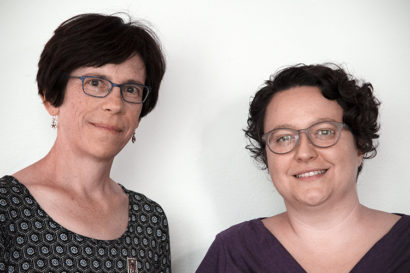Sexual violence, harassment survey results: positive social norms, but people often don’t report harm
The comprehensive survey, called MyVoice, was sent to the entire campus community — undergraduate and graduate students, staff, faculty and postdoctoral researchers

September 26, 2018
In January, UC Berkeley invited the campus community — about 56,000 people — to share their experiences with sexual violence and sexual harassment in a comprehensive survey, called MyVoice.

MyVoice — a comprehensive survey on sexual violence and sexual harassment — was given to the entire campus community.
Now, the results are in. And although the survey’s findings generally follow national data, they will prove invaluable in informing campus violence prevention, intervention and response efforts.
“We didn’t really expect that the rates were going to look different from national data that we have,” said Joy Evans, co-chair of the MyVoice action planning team and assistant director for survivor support services at UC Berkeley’s PATH to Care Center. “But the nuance of what can we do to improve prevention, what can we do to improve response, what’s unique about what’s happening on campus, is what we’re really trying to figure out.”
| Undergraduates | Graduates | Faculty | Staff |
|---|---|---|---|
| 18% | 32% | 37% | 40% |
Nearly 15,000 people completed the survey — about 26 percent. The survey was conducted by NORC, an independent research organization at the University of Chicago.

Sharon Inkelas (left) and Joy Evans are co-chairs of the MyVoice action planning team. (UC Berkeley photo by Anne Brice)
The MyVoice action planning committee has put together a working group of about a dozen students, staff and faculty on campus, who will work with the committee to identify and interpret the survey’s main findings.
As a starting point, Evans and Sharon Inkelas — co-chair of the MyVoice action planning team and special faculty adviser to the chancellor on sexual violence and sexual harassment — have created a preliminary list of the top five findings:
- Social norms on campus are generally positive.
Nearly 90 percent of survey respondents said that people in UC Berkeley’s community who experience violence deserve the support of the campus community and should receive the resources they need.
“Overall, the campus community supports survivors, rejects victim-blaming stereotypes and doesn’t believe that sexual violence and sexual harassment are the result of miscommunication,” said Inkelas.
At the same time, she said, people underestimate what their peers consider socially acceptable. “That’s something that can be addressed through education, through showing what others say they believe,” she said. “A lot of these beliefs are silent, but if you can see them demonstrated in a survey, it can be very affirming.”
- Survivors often don’t report harm.
The top reasons that people gave for not reporting harm were that they didn’t think it was serious enough, they didn’t feel they needed assistance and they worried about being blamed.
“We need to understand the next layer of what survivors are internalizing,” said Evans. “Because if they experienced any of the items in the survey, there’s a concern that there could have been harm.” For survivors who don’t report because they’re worried about being blamed — especially graduate students and staff — it’s important for the campus to build more trust, she said.
- People in marginalized groups — especially queer and trans people of color and those living with a disability — are more likely to experience sexual violence and sexual harassment.
“Although this isn’t new information,” said Evans, “it’s proof of what’s happening in our community and a reminder that all of the providers, all of the education materials, all of the ways we’re talking about experiences of harm, need to resonate with communities of color, with queer communities and folks who are living with disabilities. It can’t be an afterthought.”
- Harm is mostly perpetrated by peers, especially for undergraduates.
While this is important to keep in mind, said Evans, it’s also important to be aware that education efforts shouldn’t leave out people who have experienced harm from a non-peer.
- Undergraduate students experience more harm overall, with 30 percent having experienced sexual harassment in the last five years.
For undergraduates, most sexual harassment experiences occur off-campus and in on- and off-campus housing, they said. For graduate students, staff and faculty, most sexual harassment experiences occur in the workplace. For all, sexual assault was most likely in housing and off-campus settings. This information presents an opportunity, they said, for on campus sexual harassment prevention and a challenge for university services to respond when the campus doesn’t have jurisdiction.
In addition to informing the campus’s violence prevention, intervention and response efforts, the data will be used to tailor campus programs and services to the needs and strengths of the campus community; to gain new insights about both protective and risk factors for sexual violence and sexual harassment that come into play in various communities at Berkeley; and to acquire a baseline of sexual violence rates on campus.
While most campus-based surveys on sexual violence tend to focus on the prevalence of sexual assault among students, the MyVoice team broadened its scope in several ways.

MyVoice didn’t ask survey respondents if they had ever been sexually assaulted. Instead, it asked about harmful behaviors people had experienced.
First, MyVoice was sent to the entire campus community — undergraduate and graduate students, staff, faculty and postdoctoral researchers. And it asked about a wide range of harm, including relationship violence, stalking and harassment.
“We think they’re all related to one another — that the conditions that lead to one can lead to another, and that the tactics that work to prevent one can prevent others,” said Evans.
The survey did not ask survey respondents if they had ever been sexually assaulted, said Inkelas. “Instead, we asked people about the behaviors they had experienced, because sometimes people don’t feel comfortable putting a label to what they’ve experienced, even though it may have been harmful.”
Now that the campus has collected this data, the working group will develop recommendations and the MyVoice action planning team will take them and, by the end of this fall, combine them into a small, workable number of action steps that can be implemented in the next two years, with some more immediate actions identified and implemented this school year, said Inkelas. The campus community will be invited to weigh in along the way — online and in person at upcoming events.
To see the full report, stay up to date on events and learn more about MyVoice, visit myvoice.berkeley.edu.